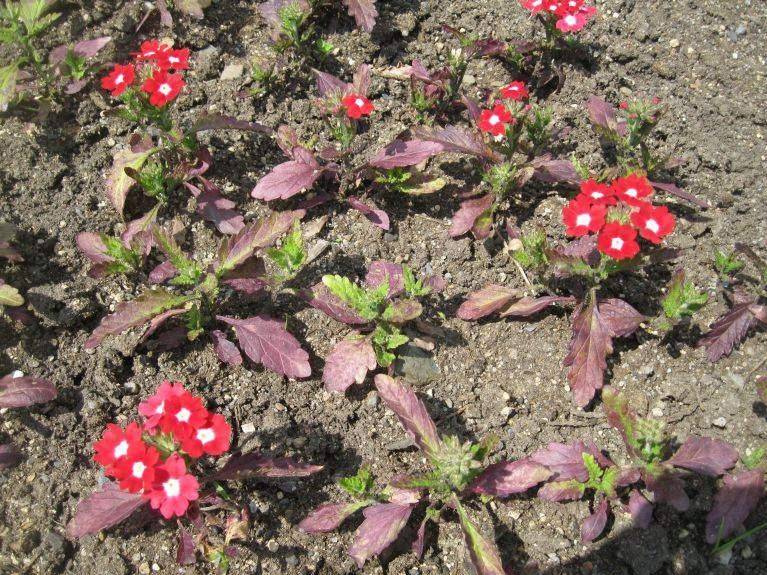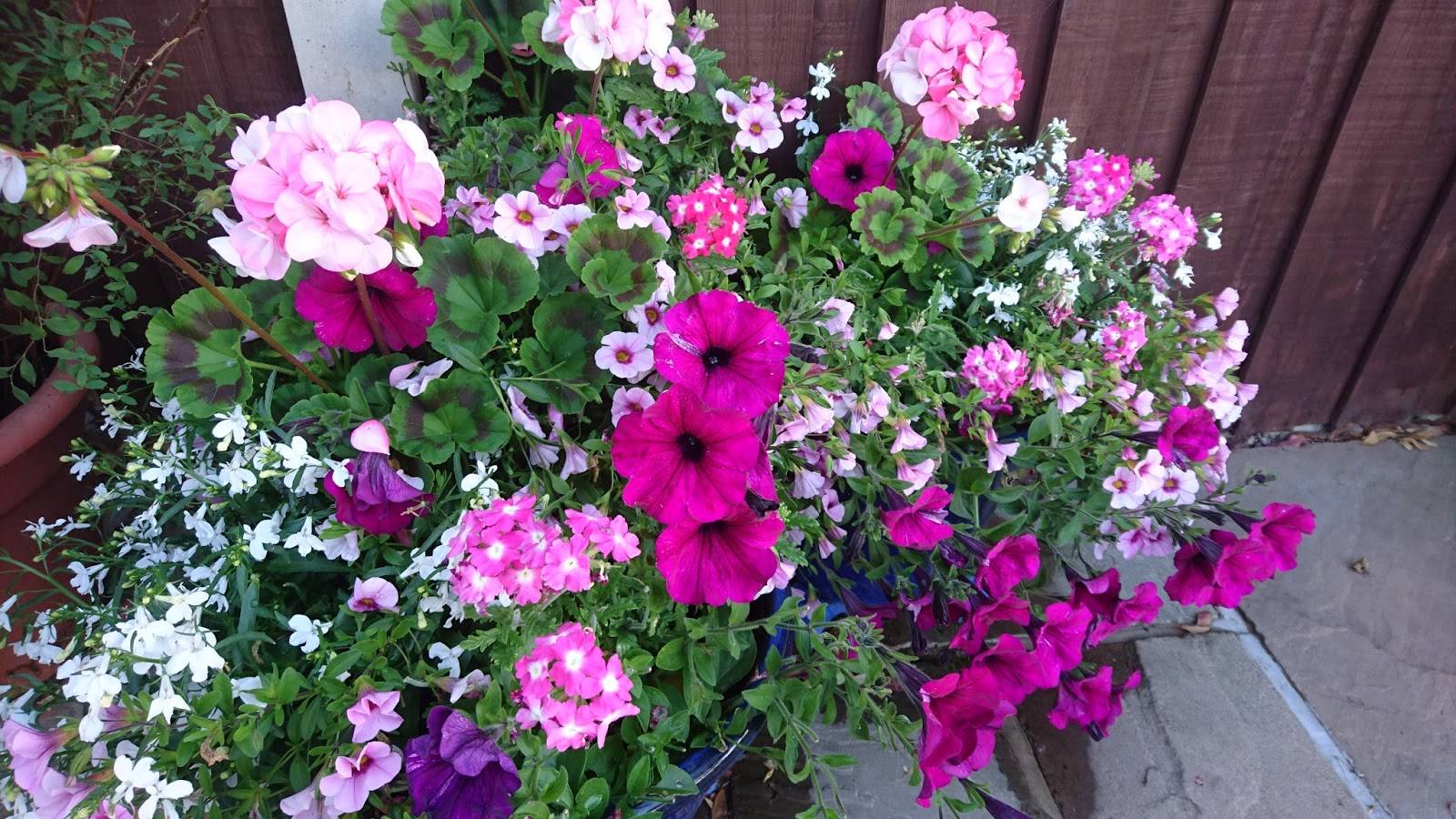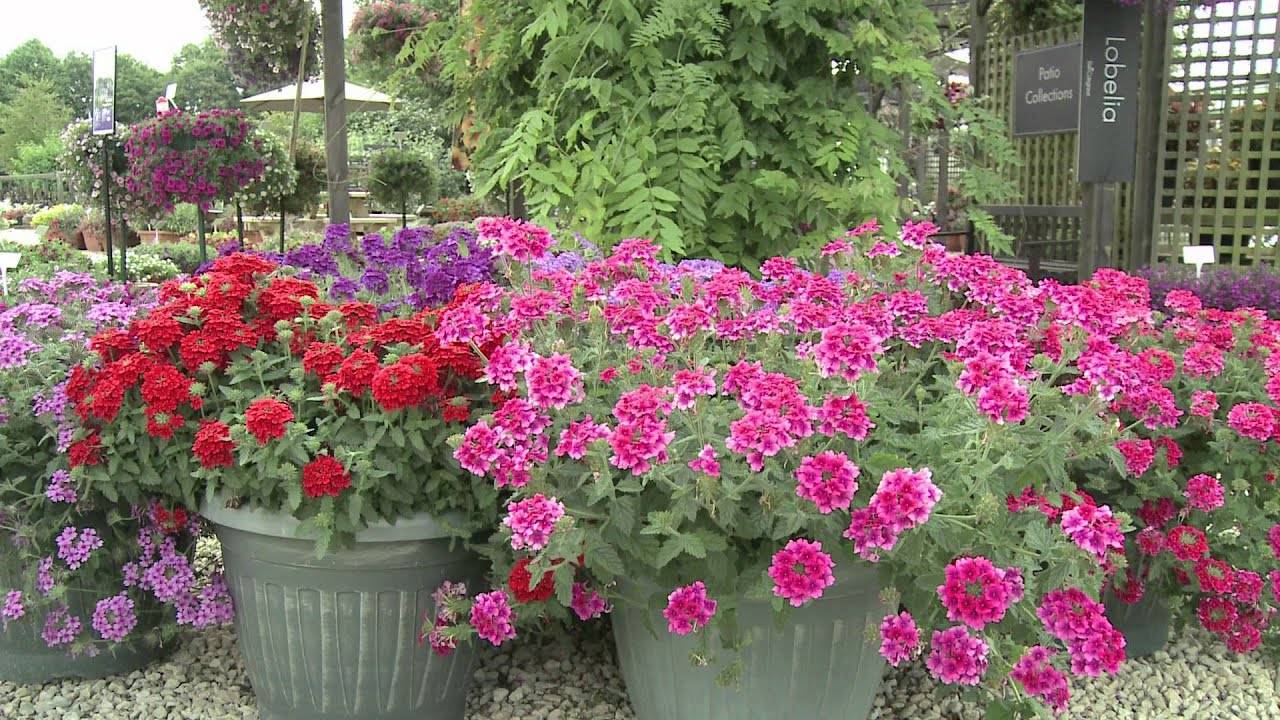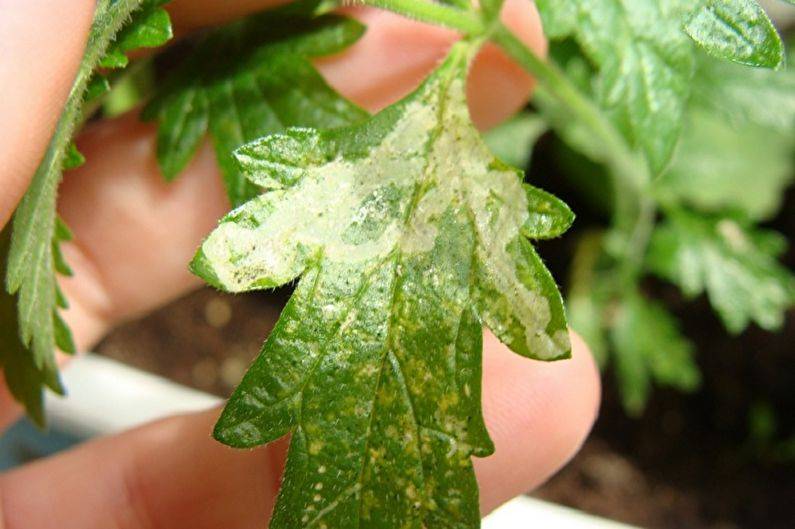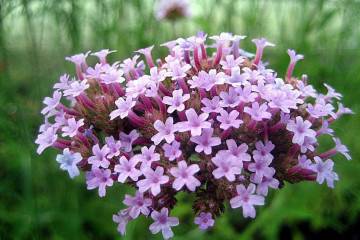Verbena hybrid: growing from seeds, varieties, Ideal
Content:
Since antiquity, vervain has been planted in the gardens, revered as a plant dedicated to the goddess of love and beauty. In Egypt, it was used in religious rituals. Modern flower beds are decorated with the most decorative variety - a hybrid, characterized by the most juicy and varied shades of petals.
General information about the plant
The flower from the Verbenaceae family is referred to as "Verbena x Hybrida" on the seed packages. The perennial is obtained by crossing several varieties of vervain (there are more than 250 of them). Due to its low frost resistance in gardens, it is cultivated as an annual crop.
Compact bushes grow from 15 to 60 cm in height, which allows growers to divide varieties into dwarf, standard and tall.
The central stem gives off numerous lateral shoots. The tetrahedral branches in those places where they touch the soil, easily start up adventitious roots. The total depth of the root system is small, only 20 cm, which makes it possible to grow flowers in pots and flowerpots.
The opposite, elongated heart-shaped leaf with a carved edge of a juicy dark green color has hard pubescence. Flowering lasts all summer until autumn. At the ends of the shoots, corymbose inflorescences are formed, in which there can be a very different number of buds. The size of the inflorescences also varies widely. The color of the flowers is diverse: purple, pink, white, blue, orange, red, both monochromatic and with a light spot (asterisk) in the center. The aroma is strong, pleasant, intensifying at sunset.
Use in garden design
Creeping, ampelous varieties are mainly grown in pots, using to decorate balconies, loggias, terraces. Erect bush varieties are planted in open ground.
The landing site is chosen in the bright sun. Only in this case will the plant be able to demonstrate the full potential of its inflorescences. In the shade, the flowers become smaller.
They decorate the garden with verbena, choosing the optimal placement for each variety:
- dwarf flowers are planted along the curbs;
- compact medium-sized bushes are placed in arrays, as well as in flowerpots and pots;
- ampel varieties are planted in suspended balcony boxes, and also used in vertical gardening;
- all varieties need protection from the wind, because of which tall bushes can fall on the ground, and dwarf and ampelous ones lose their decorative effect.
Reproduction of a herb for open ground
The plant propagates easily by vegetative means: cuttings and seeds. The second way is the most common. The seeds that are on sale remain viable for 2-3 years.When buying, it is important to pay attention not only to the shade and size of the inflorescences, but also to the dimensions of an adult plant.
Growing from hybrid verbena seeds
When choosing the sowing time for seedlings, it is taken into account that 10-14 weeks pass from the moment of emergence to the appearance of flowers, depending on the variety. You can sow in pots at the end of January or immediately in mid-May in open ground. Since the seeds are very small, they are mixed with sand for optimal results and sown as such on top.
Growing from cuttings
Shoots for propagation are cut from plants that have wintered in the house. In the fall, you can dig out bushes for wintering in a warm place. Shoots are cut in April with young foliage without spots, traces of diseases and pests. If there are flower buds and buds on the handle, they must be removed. Rooted in the substrate, creating greenhouse conditions (covering the container with a cap). Usually the root formation process takes 2-4 weeks depending on the light and temperature.
Young rooted seedlings, together with mother plants and seedlings, are planted in open ground or outdoor flowerpots in the second half of May, when stable warm weather sets in.
How to grow verbena seedlings
The step-by-step method consists of the following steps:
- A mixture consisting of fertile soil and peat in equal proportions with acidity pH = 5.8-6.0 is loaded into containers for sowing seeds. For better breathability, you can add some clean river sand.
- In order for the seeds to grow immediately, they are pre-soaked for 2 hours, and then stratified in the refrigerator for 3-4 days.
- The ideal temperature for seed germination is 22-24 ° C. Seedlings will appear in 4-7 days. The seeds are not buried, but scattered over the soil surface.
- Seedlings dive at the stage of one true leaf in individual pots or cups. This usually happens five weeks after germination. At the stage of seed germination and before picking, it is recommended to keep containers in greenhouse conditions, covered with a cap, under which the air humidity is maintained at 100%. The seeds and young shoots themselves absorb water extremely slowly, but being in a waterlogged state is fraught with the appearance of rot and mold. The cap allows you to solve this problem and spur plants to active growth and development.
- In the fifth week of development, the seedlings are pinched off the tops. In this way, tillering of plants and the formation of a compact symmetrical crown are stimulated.
- Seedlings in the second half of May, in good weather, are planted in open ground, keeping 20-25 cm between plants. The time is chosen so that the air temperature does not drop below 12 ° C at night.
Care, watering and feeding
If the growing region has a normal rainfall during the summer, then too often watering is not required, at most once a week. The hybrid does not like waterlogged soil.
At the very beginning of the growing season, seedlings are fertilized with liquid nitrogen fertilizers once a week. When transplanting, a complex mineral fertilizer is applied with the optimal formula: nitrogen (N) - phosphorus (P) - potassium (K) = 17: 5: 17. If the weather conditions are unfavorable, there are a lot of cloudy days, then calcium nitrate is added at monthly intervals in the recommended proportion: in the summer, fertilizing is needed every 2 weeks, while the nitrogen content is gradually reduced in them, instead of increasing the amount of potassium.
Treatment of beds
The most time consuming part of vervain care is systematic pruning. It is recommended to inspect the flower garden every week and put it in order.Care consists in finding and removing wilted inflorescences, yellowed or dried shoots. As a result, the bushes begin to actively branch out, releasing more and more new buds.
Keeping verbena in the house in winter
Hybrid verbena can overwinter at home, so that with the arrival of heat, the gardener can plant it back in its original place in a street flowerpot or flower garden. The plant does not tolerate frost and even light frost. Therefore, work with him is carried out in advance, without waiting for really cold nights.
In the fall (in September), all damaged, broken and withered shoots and inflorescences are cut from the bush. The bush is dug up and transferred to a pot of a suitable size. Then they are transferred to a bright room, where a stable temperature of 4-7 ° C is maintained throughout the cold season. Periodically, it is necessary to moisten the earthen lump, preventing it from drying out completely.
Hybrid verbena disease
The most common diseases:
- powdery mildew. It appears in damp cool weather or with an excess of nitrogen in the soil. Effective drugs against it are topaz, foundationol. The prepared solution is sprayed not only on the plants, but also on the soil around them;
- leaf spot is a fungal disease caused by the fungus Mycosphaerella fragariae Lind. For prophylaxis, a week after planting the seedlings, it is treated with a 1% solution of Bordeaux liquid;
- root rot is a fungal disease manifested in the blackening of the root part of the plant, decay and death of the flower. May occur due to waterlogging of the soil or contamination of the soil with spores. Treatment of plantings with topaz or foundation helps.
Of the pests, verbena is affected by the mealy mite. It is best to deal with it by preventive treatments with appropriate acaricides.
The hybrid verbena has quite a lot of advantages: the affordable cost of seeds, the versatility of brightly and long-flowering plants, and unpretentiousness to soil and maintenance. The variety of varieties and colors is only increasing every year, opening up the broadest opportunities for landscape design. Therefore, every florist will find what to choose for himself, and how to plant was described above.

